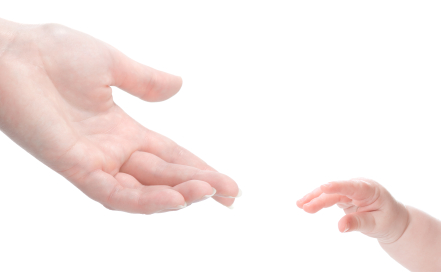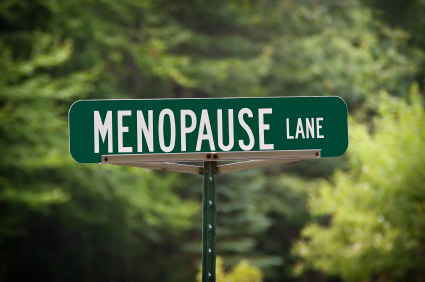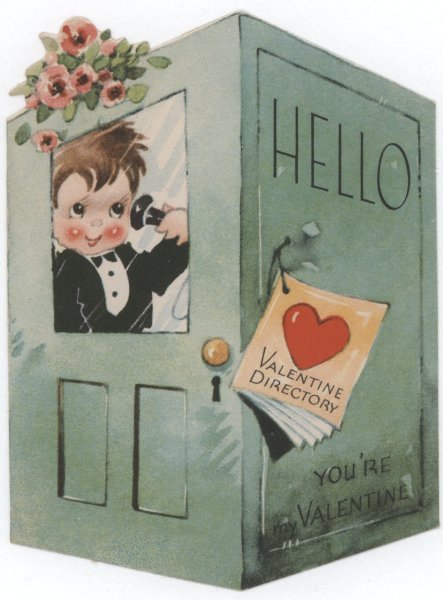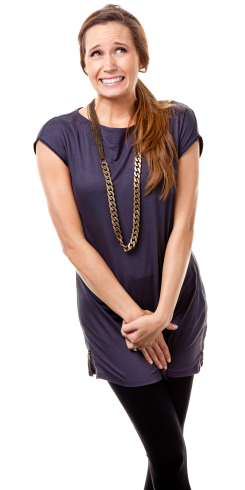Wednesday Bubble: Skin Cancer Awareness – You and Your Car
 According to recent estimates, skin cancer accounts for half of all cancers in the U.S. More than 3.5 million cases of basal or squamous cell skin cancer are diagnosed yearly; these types of skin cancer are generally found on the base or surface of the skin and can be cured if treated early enough. Melanoma — the most deadly of all skin cancers that affects the melanocytes, or cells that create skin pigmentation — accounts for more than 2/3rds of skin-cancer related deaths; this year, more than 76,000 cases are expected to be diagnosed. And, one person dies of melanoma in this country every 57 minutes.
According to recent estimates, skin cancer accounts for half of all cancers in the U.S. More than 3.5 million cases of basal or squamous cell skin cancer are diagnosed yearly; these types of skin cancer are generally found on the base or surface of the skin and can be cured if treated early enough. Melanoma — the most deadly of all skin cancers that affects the melanocytes, or cells that create skin pigmentation — accounts for more than 2/3rds of skin-cancer related deaths; this year, more than 76,000 cases are expected to be diagnosed. And, one person dies of melanoma in this country every 57 minutes.
In other words, skin cancer is not something to mess around with.
If you are like me, a child of the 60s and 70s, catching rays meant baby oil and tin foil. My father, who is in his late 80s, grew up on the beach and has spent the last 20 years having patch after patch of skin cancer removed. His body is a veritable skin cancer harvester, and he has even been permanently disfigured due to a botched procedure to freeze cancer cells below the surface of the skin on his nose. He’s lucky; he’s still alive and catching those cancers early enough.
I can’t emphasize it more: wear sunscreen. Moreover, wear it when you are in the car!
A study in the June issue of the Journal of the American Academy of Dermatology demonstrates that sun protection while driving is sorely lacking, despite the fact that driving evidently constitutes the largest percentage of total time spent outdoors, more than exercise or gardening. Moreover, on average, the majority of people in this country spend 80 to 100 minutes of their day in their cars.
Mind you, this is a retrospective study, which means that the researchers look back at events that have already occurred; this case, they mailed surveys to 675 patients who had previously attended a surgical clinic for skin cancer. Of all of these patients, 90% had a history of at least one type of skin cancer and 30, of malignant skin cancer.
Ironically? A majority did not believe that they needed to wear sunscreen while driving regardless of whether or not the windows were open or closed, although 53% of people with a prior history of skin cancer thought that they should wear it with the windows open. Real life use of sunscreen was different; about a third of these people reported wearing sunscreen “most of the time,” while only 15% used it while driving. What’s more, about a third of the people who reported wearing sunscreen most of the time while in a vehicle did not apply it to their arms or hands.
Additionally, having tinted car windows didn’t seem to provide additional protection. An equal percentage of people with or without tinted windows developed non-malignant skin cancer (85%); the only difference was the side of the body the skin cancer resided.
Here’s what you need to know:
- Automobile glass does not contribute to skin cancer equally. Important factors include the type of glass, the degree of tinting and the presence or absence of lamination or UV-absorbing film.
- In one study, clear auto glass transmitted 62% of UV radiation whereas dark-tinted glass transmitted 11.4%.
- Windshields are made from laminated glass that allows, on average, 2% transmission of UV radiation. Conversely, your side and rear windows are typically non-laminated and allow up to 80% of UV radiation. This means that the shoulder, arm and hand closest to the window needs to be protected because they are receiving the highest exposure to UV rays.
There are some issues with this study; for example, it relied on recall and and patients may have overestimated or even underestimated real exposure. However, the message is quite clear: wear sunscreen when you drive.
p.s. May is skin cancer awareness month. Pass it on: wear sunscreen, period.
Read MoreThe Mommy Factor Redux
I was scrolling through my Facebook stream yesterday and came upon a post written by a woman I know via the social spheres. She was commenting on the fact that she was consistently asked why she only had one child, as if having only one was an indication that something was wrong or that she and her partner couldn’t handle more.
It’s all about choice. More importantly, the choices we make do not always require an explanation unless we choose to offer one.
A few years back I wrote the following post. I chose to resurrect it today because her post resonated deeply with me.
I’m fairly active on Twitter. And the other day, someone I follow and respect greatly tweeted the following:
Gaining a whole new appreciation for child-free by choice types and those without kids. Society views these women so very differently.
Data released by the Pew Research Center in 2010 demonstrated that childlessness is increasing in the U.S., with roughly 1 in 5 women past childbearing years currently childless. Although the research points to “never married” as a factor, it also emphasizes the power of individual choice, employment opportunities and most importantly, a growing opinion that ‘without child’ does not equate to ’empty life.’
I am one of those women who are child-free by choice. I am a statistic. And my life is not empty.
“But aren’t you afraid you’ll regret it someday?”
“Don’t you feel badly that you didn’t give your parents grandchildren?”
“Do you understand what you are missing out on?”
Guess what? I’m going to share a little known fact with you.
I became pregnant at a time in my life when I felt I was too unsettled to properly care for a child. A time when I was with a partner with whom I didn’t feel comfortable sharing parenting responsibilities. A time that was simply the wrong time. Period. And after that? I certainly weighed the pros and cons of having children, many times. However, I ultimately decided that I was happier without having children of my own.
Shocking isn’t it?
My experience might resonate with some of you. Others might disapprove of my decision. At the end of the day? It truly is about personal choice, responsibility and a close, close look at oneself. Not everyone is suitable for parenthood.
Just because you can, doesn’t mean you should.
My life has been filled and surrounded by children for almost two decades now. I am an Aunt to three wonderful, amazing nephews and spending time with them brings me more pleasure than I can adequately express. I am also a surrogate Aunt to the children of an old friend, and although I don’t see them quite as often as I would like, I recently came to the realization that their presence, however sporadic, enriches my experience as a human being and as a woman in ways, again, for which there are no words.
Now that I’ve passed my fiftieth year, and two years after I first penned this, I still don’t feel as though the decision to leave the childbearing to other women is one that I regret or will ever regret. I made the decision based on timing, circumstance and a nagging feeling that I wasn’t meant to have a child, at least not in this lifetime, that I had a lot to offer the children in my life in ways that didn’t include being their parent.
So the next time you see a woman walking down the street without a child, or find a couple moving in next door without children, it’s probably best to assume that it’s best if all bets are off. There are many reasons why women don’t have children. And although being a mother is the defining moment for many women I know, I know just about as many who’ve chosen to remain childless and have experienced (and continue to experience) alternative defining moments in their womenhood, their lives and their spirits.
It’s all about choice. I’m grateful to have had the ability to decide what is right for me, to make choices based on that ability. Not every woman does.
Read MoreWednesday Bubble: PMS and the ‘pause
Hey all you perimenopausal women! Have you been taking a familiar walk of late? If you are anything like me, wondering how the walk down (Peri)Menopause Lane has turned out to be an PMS nightmare of epic proportions, take some comfort in knowing that you are not alone. In fact, while I remained convince most of my life that PMS would disappear as my menstrual cycle went awry, it’s been anything but. If possible, it’s worse than ever.
Turns out that a primary culprit may be exogenous (outside or external) progestogen, the type found in hormone replacement therapy (HRT) or oral contraceptives. PMS symptoms — depression, anxiety, mood swing, anger, lethargy, bloating, weight gain, headache or joint or breast tenderness — tend to flare during the luteal phase of the menstrual cycle, that is, before ovulation. And women who are subject to PMS during this time are believed to have a heightened sensitivity to the increase in progesterone levels (even if levels are lower in relation to estrogen during perimenopause) as well as malfunctioning neurotransmitters that cause the central nervous system to go a bit haywire. Add outside sources of progesterone and you’ve got a veritable pot of angst ready to boil over at a moment’s notice.
But what if you are not taking exogenous progesterone? Well, you still may have a heightened sensitivity to the increase in progesterone levels that occur post-ovulation. For perimenopausal women in particular, experts recommend stopping smoking and trying to maintain a healthy weight, especially if your practitioner recommends the addition of estrogen. In a related editorial, there is also a reference to a fruit extract known as Chasteberry (Vitex agnus castus) which was shown to control irritability and mood swings in a scientifically-sound, placebo-controlled trial.
If you prefer to go the pharmacology route and don’t want to take hormones, there has been some work done that shows that SSRI antidepressants (in much lower doses than those used for depression) can be useful in PMS (but of course, can subject women to certain side effets, such as tummy woes, insomnia, headache; these can be better avoided through cyclical use). The last resort? Hysterectomy, at least according to experts (rather extreme, don’t you think?). Mostly though, consider other options – exercise or vitamin B6 also have some clinical evidence to back their use. Finally? Before you take that walk down Menopause Lane, take a breath. Chances are that the worst of it will be behind you before you know it.
Read MoreWednesday Bubble: Calling all hearts…
Truly, no better day than the day of ‘hearts’ to remind yourself that you are loved. And that you love others. Don’t have a sig other? Well, you likely have lots of significant others. Love thyself. That’s the V-Day mantra, one day early.
Read More
Gotta go?! It may not be the ‘pause
Urinary incontinence, that is, involuntary leakage of urine, affects up to 30% of women in the United States and is expected to grow exponentially as the population ages. Usually classified by type, it can be devastating to quality of life and overall wellbeing. The three main types include:
- Stress urinary incontinence (stress incontinence), i.e. involuntary loss of urine caused by physical stress (coughing, lifting, heavy activity) and is often related to the weakening of the pelvic floor muscles after pregnancy.
- Overactive bladder (urge urinary incontinence), that is characterized by an urgent and mostly unavoidable need to urinate relating to a dysfunction of the bladder muscle and how it contracts.
- Mixed incontinence, i.e. a combination of the two.
In the interest of full disclosure, I was immersed in the topic for almost 5 years; I was acting in an advisory capacity to Merck Consumer Care who recently received marketing approval for Oxytrol For Women. Oxytrol for Women is an over the counter transdermal patch for overactive bladder. However, that’s not why I am writing about it; I have wanted to address urinary incontinence for a long time on this blog but could not do so since I had a conflict of interest. Now that that conflict is gone, I am finally able to share information, and more specifically, whether or not urinary incontinence is linked with menopause and hormone deficiency as estrogen starts to decline. Reports suggest that roughly 8% to 27% of menopausal women suffer.
Until now, only a few studies have truly focused on women between the ages of 45 and 60, i.e. what I often call the ‘menopausal set.’ More importantly (and what you need to know): when French researchers conducted a thorough review of 29 studies, culled down from an initial total of 488, they found that the connection between menopause and urinary incontinence is tenuous at best.
In fact, in one of the largest studies that they looked at — the Study of Women’s Health Across the Nation (SWAN, which followed 1,529 women annually for 6 years– they found that the data show that during perimenopause, women have a one and a half times greater risk for urinary incontinence, but this risk disappears when they reach menopause. In an associated study, SWAN researchers reported that data linking menopause to a worsening of incontinence symptoms appears to be due to weight gain and not hormones. Ironically, other studies have linked the decline in estrogen to improvements in urine incontinence symptoms.
So, what about HRT? Where does it fit into the picture if the link between menopause/estrogen decline is weak? Well, when the researchers looked at that data, they found that type of incontinence and how HRT is administered does matter. Both the Nurses Health Study and the esteemed Cochrane Database have shown that oral HRT increases incontinence risk and worsens symptoms, while topical treatments may actually improve symptoms and number of episodes.
The researchers write that menopause has little if any impact on the risk of urinary incontinence in general, especially when other factors such as weight gain or age are taken into account. The good news for women with stress incontinence is that the condition appears to decline after menopause, although, granted, a mixed bag may take its place. And oral HRT? Buyer beware! If you’ve got either stress incontinence or overactive bladder, it may worsen your symptoms!
Urinary incontinence may be as much as taboo subject as vaginal atrophy. But it’s definitely one that needs to be talked about, especially as more and more women transition into midlife. Fortunately, it looks like menopause is not the cause, which should bring a sigh of relief. Meanwhile, gotta go? Talk to a health practitioner. Stress incontinence can often be successfully controlled through pelvic floor exercise, and overactive bladder symptoms may benefit through a combination of exercise and drugs. The main thing is to realize that you don’t have suffer alone; there’s a lot of leakage going on.
Read More










